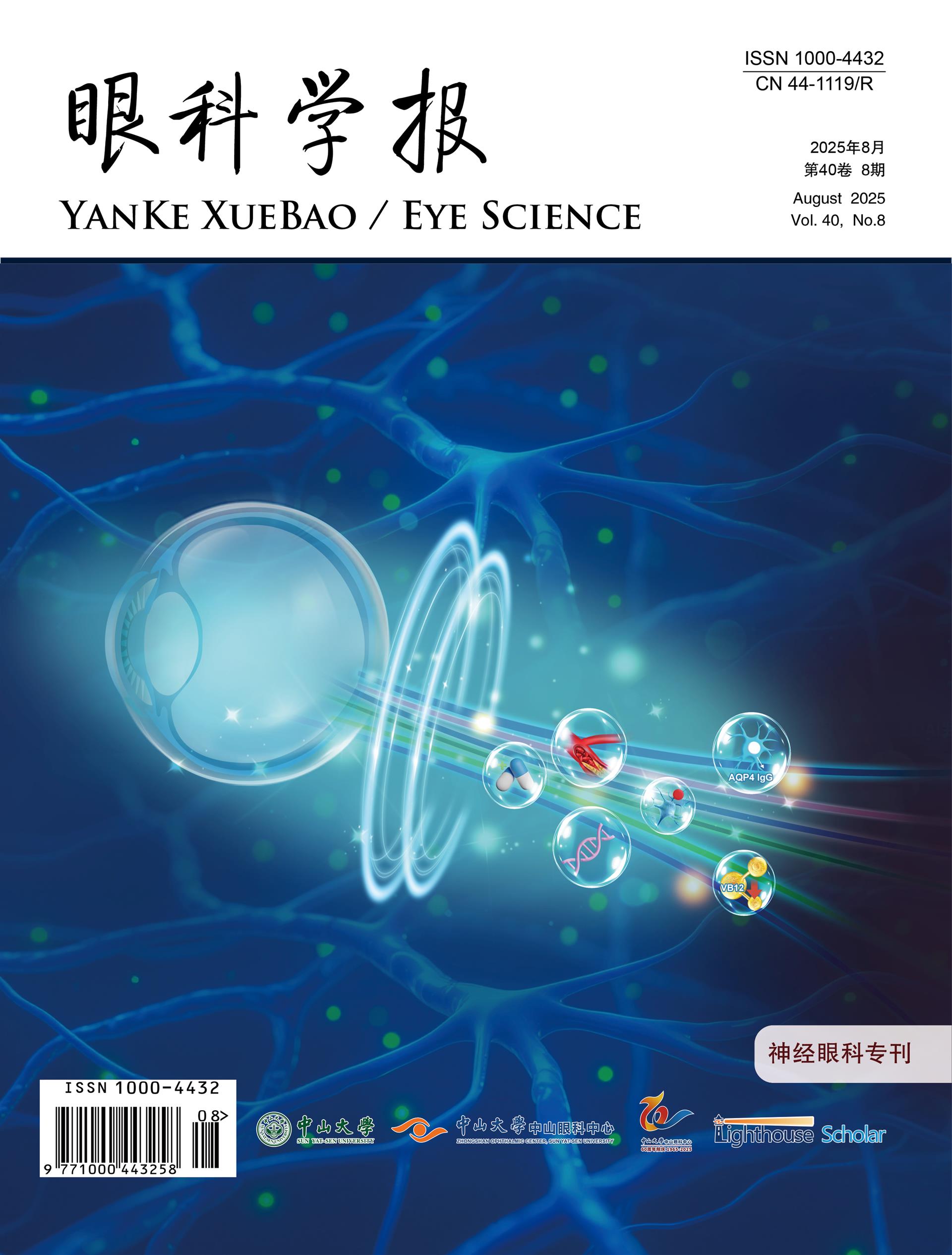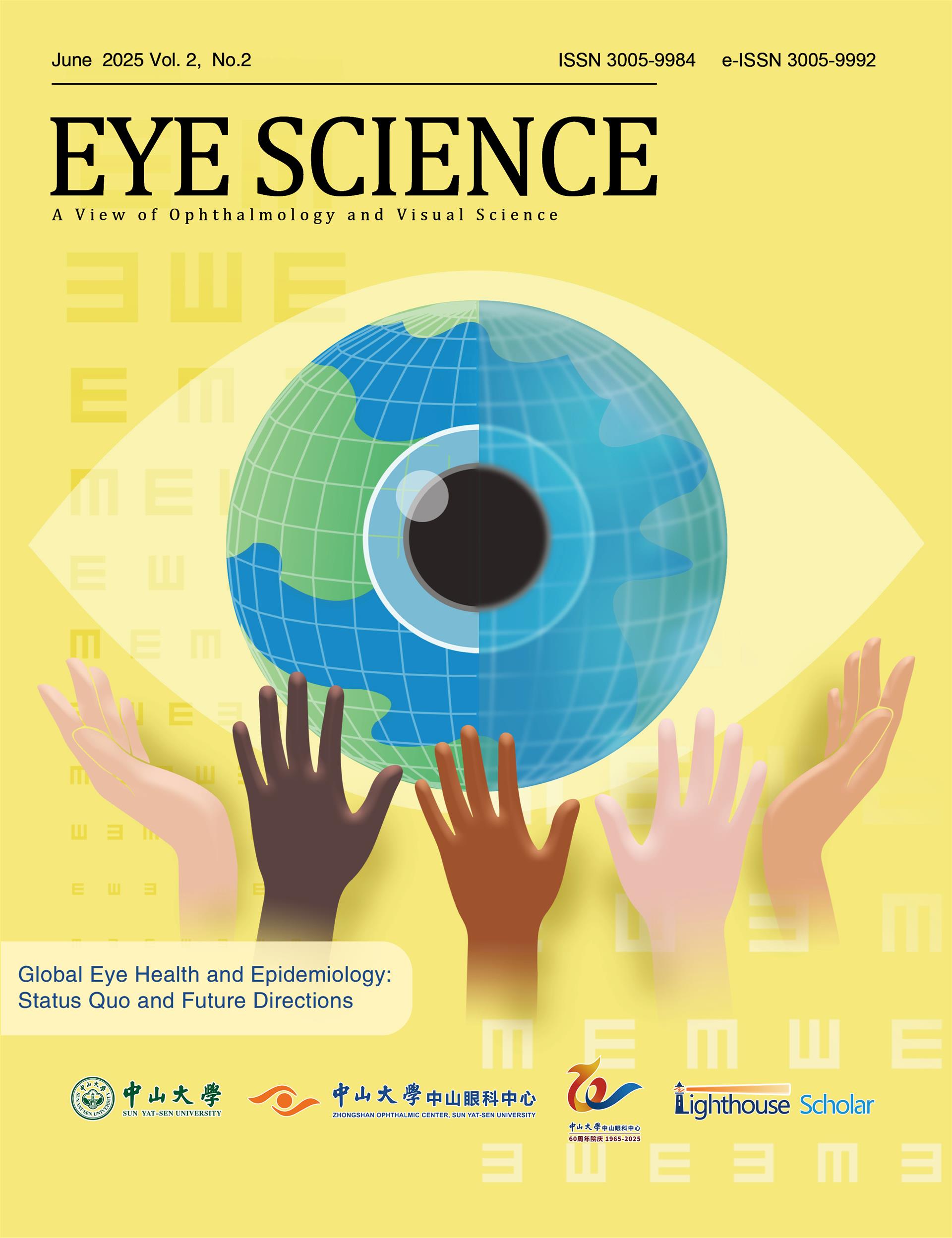1、Prete M, Dammacco R, Fatone MC, etal. Autoimmune
uveitis: clinical, pathogenetic, and therapeutic features.
Clin Exp Med. 2016, 16(2): 125-136. DOI: 10.1007/
s10238-015-0345-6.Prete M, Dammacco R, Fatone MC, etal. Autoimmune
uveitis: clinical, pathogenetic, and therapeutic features.
Clin Exp Med. 2016, 16(2): 125-136. DOI: 10.1007/
s10238-015-0345-6.
2、Jabs DA, Rosenbaum JT. Guidelines for the use of
immunosuppressive drugs in patients with ocular
inflammatory disorders: recommendations of an expert
panel. AmJOphthalmol. 2001, 131(5): 679. DOI: 10.1016/
s0002-9394(01)00830-3.Jabs DA, Rosenbaum JT. Guidelines for the use of
immunosuppressive drugs in patients with ocular
inflammatory disorders: recommendations of an expert
panel. AmJOphthalmol. 2001, 131(5): 679. DOI: 10.1016/
s0002-9394(01)00830-3.
3、Rhen T, Cidlowski JA. Antiinflammatory action of
glucocorticoids: new mechanisms for old drugs. N
Engl J Med. 2005, 353(16): 1711-1723. DOI: 10.1056/
NEJMra050541.Rhen T, Cidlowski JA. Antiinflammatory action of
glucocorticoids: new mechanisms for old drugs. N
Engl J Med. 2005, 353(16): 1711-1723. DOI: 10.1056/
NEJMra050541.
4、Caspi RR. A look at autoimmunity and inflammation in
the eye. J Clin Invest. 2010, 120(9): 3073-3083. DOI:
10.1172/JCI42440.Caspi RR. A look at autoimmunity and inflammation in
the eye. J Clin Invest. 2010, 120(9): 3073-3083. DOI:
10.1172/JCI42440.
5、Caspi RR. Understanding autoimmunity in the eye: from
animal models to novel therapies. Discov Med. 2014,
17(93): 155-162.Caspi RR. Understanding autoimmunity in the eye: from
animal models to novel therapies. Discov Med. 2014,
17(93): 155-162.
6、Chong WP, Mattapallil MJ, Raychaudhuri K, et al. The
cytokine IL-17A limits Th17 pathogenicity via a negative
feedback loop driven by autocrine induction of IL-
24. Immunity. 2020, 53(2): 384-397.e5.DOI: 10.1016/
j.immuni.2020.06.022.Chong WP, Mattapallil MJ, Raychaudhuri K, et al. The
cytokine IL-17A limits Th17 pathogenicity via a negative
feedback loop driven by autocrine induction of IL-
24. Immunity. 2020, 53(2): 384-397.e5.DOI: 10.1016/
j.immuni.2020.06.022.
7、Li AS, Velez G, Darbro B, et al. Whole-exome sequencing
of patients with posterior segment uveitis. AmJOphthalmol,
2021, 221: 246-259. DOI: 10.1016/j.ajo.2020.07.021.Li AS, Velez G, Darbro B, et al. Whole-exome sequencing
of patients with posterior segment uveitis. AmJOphthalmol,
2021, 221: 246-259. DOI: 10.1016/j.ajo.2020.07.021.
8、Li Y, Su G, Huang F, et al. Identification of differently
expressed mRNAs by peripheral blood mononuclear cells
in Vogt-Koyanagi-Harada disease. Genes Dis.2021, 9(5):
1378-1388. DOI: 10.1016/j.gendis.2021.06.002.Li Y, Su G, Huang F, et al. Identification of differently
expressed mRNAs by peripheral blood mononuclear cells
in Vogt-Koyanagi-Harada disease. Genes Dis.2021, 9(5):
1378-1388. DOI: 10.1016/j.gendis.2021.06.002.
9、Okubo%20M%2C%20Sumitomo%20S%2C%20Tsuchida%20Y%2C%20et%20al.%20Transcriptome%20%0Aanalysis%20of%20immune%20cells%20from%20Beh%C3%A7et%E2%80%99s%20syndrome%20patients%3A%20%0Athe%20importance%20of%20IL-17-producing%20cells%20and%20antigen%02presenting%20cells%20in%20the%20pathogenesis%20of%20Beh%C3%A7et%E2%80%99s%20syndrome.%20%0AArthritis%20Res%20Ther.%202022%2C%2024(1)%3A%20186.%20DOI%3A%2010.1186%2F%0As13075-022-02867-x.Okubo%20M%2C%20Sumitomo%20S%2C%20Tsuchida%20Y%2C%20et%20al.%20Transcriptome%20%0Aanalysis%20of%20immune%20cells%20from%20Beh%C3%A7et%E2%80%99s%20syndrome%20patients%3A%20%0Athe%20importance%20of%20IL-17-producing%20cells%20and%20antigen%02presenting%20cells%20in%20the%20pathogenesis%20of%20Beh%C3%A7et%E2%80%99s%20syndrome.%20%0AArthritis%20Res%20Ther.%202022%2C%2024(1)%3A%20186.%20DOI%3A%2010.1186%2F%0As13075-022-02867-x.
10、Shu J, Su G, Zhang J, et al. Analyses of circRNA
and mRNA profiles in vogt-koyanagi-harada disease.
Front Immunol. 2021, 12: 738760. DOI: 10.3389/
fimmu.2021.738760.Shu J, Su G, Zhang J, et al. Analyses of circRNA
and mRNA profiles in vogt-koyanagi-harada disease.
Front Immunol. 2021, 12: 738760. DOI: 10.3389/
fimmu.2021.738760.
11、Wennink RAW, Pandit A, Haasnoot AJW, et al. Whole
transcriptome analysis reveals heterogeneity in B cell
memory populations in patients with juvenile idiopathic
arthritis-associated uveitis. Front Immunol. 2020, 11:
2170. DOI: 10.3389/fimmu.2020.02170.Wennink RAW, Pandit A, Haasnoot AJW, et al. Whole
transcriptome analysis reveals heterogeneity in B cell
memory populations in patients with juvenile idiopathic
arthritis-associated uveitis. Front Immunol. 2020, 11:
2170. DOI: 10.3389/fimmu.2020.02170.
12、Zou Y, Li JJ, Xue W, et al. Epigenetic modifications and
therapy in uveitis. Front Cell Dev Biol. 2021, 9: 758240.
DOI: 10.3389/fcell.2021.758240.Zou Y, Li JJ, Xue W, et al. Epigenetic modifications and
therapy in uveitis. Front Cell Dev Biol. 2021, 9: 758240.
DOI: 10.3389/fcell.2021.758240.
13、Baysoy A, Bai Z, Satija R, etal. The technological
landscape and applications of single-cell multi-omics. Nat
Rev Mol Cell Biol. 2023, 24(10): 695-713. DOI: 10.1038/
s41580-023-00615-w.Baysoy A, Bai Z, Satija R, etal. The technological
landscape and applications of single-cell multi-omics. Nat
Rev Mol Cell Biol. 2023, 24(10): 695-713. DOI: 10.1038/
s41580-023-00615-w.
14、Tang F, Barbacioru C, Wang Y, et al. mRNA-Seq whole�transcriptome analysis of a single cell. Nat Methods. 2009,
6(5): 377-382. DOI: 10.1038/nmeth.1315.Tang F, Barbacioru C, Wang Y, et al. mRNA-Seq whole�transcriptome analysis of a single cell. Nat Methods. 2009,
6(5): 377-382. DOI: 10.1038/nmeth.1315.
15、You M, Chen L, Zhang D, et al. Single-cell epigenomic
landscape of peripheral immune cells reveals establishment
of trained immunity in individuals convalescing from
COVID-19. Nat Cell Biol. 2021, 23(6): 620-630. DOI:
10.1038/s41556-021-00690-1.You M, Chen L, Zhang D, et al. Single-cell epigenomic
landscape of peripheral immune cells reveals establishment
of trained immunity in individuals convalescing from
COVID-19. Nat Cell Biol. 2021, 23(6): 620-630. DOI:
10.1038/s41556-021-00690-1.
16、Szabo PA, Levitin HM, Miron M, et al. Single-cell
transcriptomics of human T cells reveals tissue and
activation signatures in health and disease. Nat Commun.
2019, 10(1): 4706. DOI: 10.1038/s41467-019-12464-3.Szabo PA, Levitin HM, Miron M, et al. Single-cell
transcriptomics of human T cells reveals tissue and
activation signatures in health and disease. Nat Commun.
2019, 10(1): 4706. DOI: 10.1038/s41467-019-12464-3.
17、Stewart A, Ng JCF, Wallis G, etal. Single-cell
transcriptomic analyses define distinct peripheral
B cell subsets and discrete development pathways.
Front Immunol. 2021, 12: 602539. DOI: 10.3389/
fimmu.2021.602539.Stewart A, Ng JCF, Wallis G, etal. Single-cell
transcriptomic analyses define distinct peripheral
B cell subsets and discrete development pathways.
Front Immunol. 2021, 12: 602539. DOI: 10.3389/
fimmu.2021.602539.
18、Ulirsch JC, Lareau CA, Bao EL, et al. Interrogation of
human hematopoiesis at single-cell and single-variant
resolution. Nat Genet. 2019, 51(4): 683-693. DOI:
10.1038/s41588-019-0362-6.Ulirsch JC, Lareau CA, Bao EL, et al. Interrogation of
human hematopoiesis at single-cell and single-variant
resolution. Nat Genet. 2019, 51(4): 683-693. DOI:
10.1038/s41588-019-0362-6.
19、Duong TE, Wu Y, Sos BC, et al. A single-cell regulatory
map of postnatal lung alveologenesis in humans and
mice. Cell Genom. 2022, 2(3): 100108. DOI: 10.1016/
j.xgen.2022.100108.Duong TE, Wu Y, Sos BC, et al. A single-cell regulatory
map of postnatal lung alveologenesis in humans and
mice. Cell Genom. 2022, 2(3): 100108. DOI: 10.1016/
j.xgen.2022.100108.
20、Cusanovich DA, Hill AJ, Aghamirzaie D, et al. A single�cell atlas of in vivomammalian chromatin accessibility.
Cell. 2018, 174(5): 1309-1324.e18.DOI: 10.1016/
j.cell.2018.06.052.Cusanovich DA, Hill AJ, Aghamirzaie D, et al. A single�cell atlas of in vivomammalian chromatin accessibility.
Cell. 2018, 174(5): 1309-1324.e18.DOI: 10.1016/
j.cell.2018.06.052.
21、Satpathy AT, Granja JM, Yost KE, et al. Massively parallel
single-cell chromatin landscapes of human immune cell
development and intratumoral T cell exhaustion. Nat
Biotechnol. 2019, 37(8): 925-936. DOI: 10.1038/s41587-
019-0206-z.Satpathy AT, Granja JM, Yost KE, et al. Massively parallel
single-cell chromatin landscapes of human immune cell
development and intratumoral T cell exhaustion. Nat
Biotechnol. 2019, 37(8): 925-936. DOI: 10.1038/s41587-
019-0206-z.
22、Ranzoni AM, Tangherloni A, Berest I, et al. Integrative
single-cell RNA-seq and ATAC-seq analysis of human
developmental hematopoiesis. Cell Stem Cell. 2021, 28(3):
472-487.e7. DOI: 10.1016/j.stem.2020.11.015.Ranzoni AM, Tangherloni A, Berest I, et al. Integrative
single-cell RNA-seq and ATAC-seq analysis of human
developmental hematopoiesis. Cell Stem Cell. 2021, 28(3):
472-487.e7. DOI: 10.1016/j.stem.2020.11.015.
23、Morabito S, Miyoshi E, Michael N, et al. Single-nucleus
chromatin accessibility and transcriptomic characterization
of Alzheimer’s disease. Nat Genet. 2021, 53(8): 1143-
1155. DOI: 10.1038/s41588-021-00894-z.Morabito S, Miyoshi E, Michael N, et al. Single-nucleus
chromatin accessibility and transcriptomic characterization
of Alzheimer’s disease. Nat Genet. 2021, 53(8): 1143-
1155. DOI: 10.1038/s41588-021-00894-z.
24、Ma S, Zhang B, LaFave LM, et al. Chromatin potential
identified by shared single-cell profiling of RNA and
chromatin. Cell. 2020, 183(4): 1103-1116.e20.DOI:
10.1016/j.cell.2020.09.056.Ma S, Zhang B, LaFave LM, et al. Chromatin potential
identified by shared single-cell profiling of RNA and
chromatin. Cell. 2020, 183(4): 1103-1116.e20.DOI:
10.1016/j.cell.2020.09.056.
25、Caspi%20RR.%20Ocular%20autoimmunity%3A%20the%20price%20of%20privilege%3F.%20%0AImmunol%20Rev.%202006%2C%20213%3A%2023-35.%20DOI%3A%2010.1111%2Fj.1600-%0A065X.2006.00439.x.Caspi%20RR.%20Ocular%20autoimmunity%3A%20the%20price%20of%20privilege%3F.%20%0AImmunol%20Rev.%202006%2C%20213%3A%2023-35.%20DOI%3A%2010.1111%2Fj.1600-%0A065X.2006.00439.x.
26、Heng JS, Hackett SF, Stein-O’Brien GL, et al.
Comprehensive analysis of a mouse model of spontaneous
uveoretinitis using single-cell RNA sequencing. Proc
Natl Acad Sci USA. 2019, 116(52): 26734-26744. DOI:
10.1073/pnas.1915571116.Heng JS, Hackett SF, Stein-O’Brien GL, et al.
Comprehensive analysis of a mouse model of spontaneous
uveoretinitis using single-cell RNA sequencing. Proc
Natl Acad Sci USA. 2019, 116(52): 26734-26744. DOI:
10.1073/pnas.1915571116.
27、Yin M, Smith JA, Chou M, et al. Tracking the role of Aire
in immune tolerance to the eye with a TCR transgenic
mouse model. Proc Natl Acad Sci U S A. 2024, 121(5):
e2311487121. DOI: 10.1073/pnas.2311487121.Yin M, Smith JA, Chou M, et al. Tracking the role of Aire
in immune tolerance to the eye with a TCR transgenic
mouse model. Proc Natl Acad Sci U S A. 2024, 121(5):
e2311487121. DOI: 10.1073/pnas.2311487121.
28、Gao Y, Duan R, Li H, et al. Single-cell analysis of immune
cells on gingiva-derived mesenchymal stem cells in
experimental autoimmune uveitis. iScience. 2023, 26(5):
106729. DOI: 10.1016/j.isci.2023.106729.Gao Y, Duan R, Li H, et al. Single-cell analysis of immune
cells on gingiva-derived mesenchymal stem cells in
experimental autoimmune uveitis. iScience. 2023, 26(5):
106729. DOI: 10.1016/j.isci.2023.106729.
29、Li H, Zhu L, Wang R, et al. Aging weakens Th17 cell
pathogenicity and ameliorates experimental autoimmune
uveitis in mice. Protein Cell. 2022, 13(6): 422-445. DOI:
10.1007/s13238-021-00882-3.Li H, Zhu L, Wang R, et al. Aging weakens Th17 cell
pathogenicity and ameliorates experimental autoimmune
uveitis in mice. Protein Cell. 2022, 13(6): 422-445. DOI:
10.1007/s13238-021-00882-3.
30、Hu Y, Hu Y, Xiao Y, et al. Genetic landscape and
autoimmunity of monocytes in developing Vogt-Koyanagi�Harada disease. Proc Natl Acad Sci USA. 2020, 117(41):
25712-25721. DOI: 10.1073/pnas.2002476117.Hu Y, Hu Y, Xiao Y, et al. Genetic landscape and
autoimmunity of monocytes in developing Vogt-Koyanagi�Harada disease. Proc Natl Acad Sci USA. 2020, 117(41):
25712-25721. DOI: 10.1073/pnas.2002476117.
31、Zheng%20W%2C%20Wang%20X%2C%20Liu%20J%2C%20et%20al.%20Single-cell%20analyses%20%0Ahighlight%20the%20proinflammatory%20contribution%20of%20C1q%02high%20monocytes%20to%20Beh%C3%A7et%E2%80%99s%20disease.%20Proc%20Natl%20Acad%20Sci%20%0AU%20S%20A.%202022%2C%20119(26)%3A%20e2204289119.%20DOI%3A%2010.1073%2Fpnas.2204289119.Zheng%20W%2C%20Wang%20X%2C%20Liu%20J%2C%20et%20al.%20Single-cell%20analyses%20%0Ahighlight%20the%20proinflammatory%20contribution%20of%20C1q%02high%20monocytes%20to%20Beh%C3%A7et%E2%80%99s%20disease.%20Proc%20Natl%20Acad%20Sci%20%0AU%20S%20A.%202022%2C%20119(26)%3A%20e2204289119.%20DOI%3A%2010.1073%2Fpnas.2204289119.
32、Wang%20Q%2C%20Ma%20J%2C%20Gong%20Y%2C%20et%20al.%20Sex-specific%20circulating%20%0Aunconventional%20neutrophils%20determine%20immunological%20%0Aoutcome%20of%20auto-inflammatory%20Beh%C3%A7et%E2%80%99s%20uveitis.%20Cell%20%0ADiscov.%202024%2C%2010(1)%3A%2047.%20DOI%3A%2010.1038%2Fs41421-024-%0A00671-2.Wang%20Q%2C%20Ma%20J%2C%20Gong%20Y%2C%20et%20al.%20Sex-specific%20circulating%20%0Aunconventional%20neutrophils%20determine%20immunological%20%0Aoutcome%20of%20auto-inflammatory%20Beh%C3%A7et%E2%80%99s%20uveitis.%20Cell%20%0ADiscov.%202024%2C%2010(1)%3A%2047.%20DOI%3A%2010.1038%2Fs41421-024-%0A00671-2.
33、Chang L, Zheng Z, Qinghua Z, et al. Single cell
Transcriptome and T cell Repertoire Mapping of
the Mechanistic Signatures and T cell Trajectories
Contributing to Vascular and Dermal Manifestations of
Behcet Disease. 2022:2022.2003. 2022.485251.Chang L, Zheng Z, Qinghua Z, et al. Single cell
Transcriptome and T cell Repertoire Mapping of
the Mechanistic Signatures and T cell Trajectories
Contributing to Vascular and Dermal Manifestations of
Behcet Disease. 2022:2022.2003. 2022.485251.
34、Kang%20H%2C%20Sun%20H%2C%20Yang%20Y%2C%20et%20al.%20Autoimmune%20uveitis%20in%20%0ABeh%C3%A7et%E2%80%99s%20disease%20and%20Vogt-Koyanagi-Harada%20disease%20differ%20%0Ain%20tissue%20immune%20infiltration%20and%20T%20cell%20clonality.%20Clin%20%0ATransl%20Immunology.%202023%2C%2012(9)%3A%20e1461.%20DOI%3A%2010.1002%2F%0Acti2.1461.Kang%20H%2C%20Sun%20H%2C%20Yang%20Y%2C%20et%20al.%20Autoimmune%20uveitis%20in%20%0ABeh%C3%A7et%E2%80%99s%20disease%20and%20Vogt-Koyanagi-Harada%20disease%20differ%20%0Ain%20tissue%20immune%20infiltration%20and%20T%20cell%20clonality.%20Clin%20%0ATransl%20Immunology.%202023%2C%2012(9)%3A%20e1461.%20DOI%3A%2010.1002%2F%0Acti2.1461.
35、Ginhoux F, Greter M, Leboeuf M, et al. Fate mapping
analysis reveals that adult microglia derive from primitive
macrophages. Science. 2010, 330(6005): 841-845. DOI:
10.1126/science.1194637.Ginhoux F, Greter M, Leboeuf M, et al. Fate mapping
analysis reveals that adult microglia derive from primitive
macrophages. Science. 2010, 330(6005): 841-845. DOI:
10.1126/science.1194637.
36、Okunuki Y, Mukai R, Nakao T, et al. Retinal microglia
initiate neuroinflammation in ocular autoimmunity. Proc
Natl Acad Sci USA. 2019, 116(20): 9989-9998. DOI:
10.1073/pnas.1820387116.Okunuki Y, Mukai R, Nakao T, et al. Retinal microglia
initiate neuroinflammation in ocular autoimmunity. Proc
Natl Acad Sci USA. 2019, 116(20): 9989-9998. DOI:
10.1073/pnas.1820387116.
37、Liu J, Liao X, Li N, et al. Single‐cell RNA sequencing
reveals inflammatory retinal microglia in experimental
autoimmune uveitis. MedComm. 2024, 5(4): e534. DOI:
10.1002/mco2.534.Liu J, Liao X, Li N, et al. Single‐cell RNA sequencing
reveals inflammatory retinal microglia in experimental
autoimmune uveitis. MedComm. 2024, 5(4): e534. DOI:
10.1002/mco2.534.
38、Kasper M, Heming M, Schafflick D, et al. Intraocular
dendritic cells characterize HLA-B27-associated acute
anterior uveitis. Elife. 2021, 10: e67396. DOI: 10.7554/
eLife.67396.Kasper M, Heming M, Schafflick D, et al. Intraocular
dendritic cells characterize HLA-B27-associated acute
anterior uveitis. Elife. 2021, 10: e67396. DOI: 10.7554/
eLife.67396.
39、Hiddingh S, Pandit A, Verhagen F, et al. Transcriptome
network analysis implicates CX3CR1-positive type 3
dendritic cells in non-infectious uveitis. Elife. 2023, 12:
e74913. DOI: 10.7554/eLife.74913.Hiddingh S, Pandit A, Verhagen F, et al. Transcriptome
network analysis implicates CX3CR1-positive type 3
dendritic cells in non-infectious uveitis. Elife. 2023, 12:
e74913. DOI: 10.7554/eLife.74913.
40、 Shi W, Ye J, Shi Z, et al. Chromatin accessibility analysis
reveals regulatory dynamics and therapeutic relevance of
Vogt-Koyanagi-Harada disease. Commun Biol. 2022, 5(1):
506. DOI: 10.1038/s42003-022-03430-9. Shi W, Ye J, Shi Z, et al. Chromatin accessibility analysis
reveals regulatory dynamics and therapeutic relevance of
Vogt-Koyanagi-Harada disease. Commun Biol. 2022, 5(1):
506. DOI: 10.1038/s42003-022-03430-9.
41、Lin JB, Pepple KL, Concepcion C, et al. Aqueous
macrophages contribute to conserved CCL2 and CXCL10
gradients in uveitis. Ophthalmol Sci. 2024, 4(4): 100453.
DOI: 10.1016/j.xops.2023.100453.Lin JB, Pepple KL, Concepcion C, et al. Aqueous
macrophages contribute to conserved CCL2 and CXCL10
gradients in uveitis. Ophthalmol Sci. 2024, 4(4): 100453.
DOI: 10.1016/j.xops.2023.100453.
42、Li H, Xie L, Zhu L, et al. Multicellular immune dynamics
implicate PIM1 as a potential therapeutic target for uveitis.
Nat Commun. 2022, 13(1): 5866. DOI: 10.1038/s41467-
022-33502-7.Li H, Xie L, Zhu L, et al. Multicellular immune dynamics
implicate PIM1 as a potential therapeutic target for uveitis.
Nat Commun. 2022, 13(1): 5866. DOI: 10.1038/s41467-
022-33502-7.
43、Liu X, Gu C, Lv J, et al. Progesterone attenuates Th17-cell
pathogenicity in autoimmune uveitis via Id2/Pim1 axis.
J Neuroinflammation. 2023, 20(1): 144. DOI: 10.1186/
s12974-023-02829-3.Liu X, Gu C, Lv J, et al. Progesterone attenuates Th17-cell
pathogenicity in autoimmune uveitis via Id2/Pim1 axis.
J Neuroinflammation. 2023, 20(1): 144. DOI: 10.1186/
s12974-023-02829-3.
44、Zhu L, Li H, Wang R, et al. Identification of Hif1α as a
potential participant in autoimmune uveitis pathogenesis
using single-cell transcriptome analysis. Invest Ophthalmol
Vis Sci. 2023, 64(5): 24. DOI: 10.1167/iovs.64.5.24.Zhu L, Li H, Wang R, et al. Identification of Hif1α as a
potential participant in autoimmune uveitis pathogenesis
using single-cell transcriptome analysis. Invest Ophthalmol
Vis Sci. 2023, 64(5): 24. DOI: 10.1167/iovs.64.5.24.
45、Peng X, Li H, Zhu L, et al. Single-cell sequencing of
the retina shows that LDHA regulates pathogenesis of
autoimmune uveitis. J Autoimmun. 2024, 143: 103160.
DOI: 10.1016/j.jaut.2023.103160.Peng X, Li H, Zhu L, et al. Single-cell sequencing of
the retina shows that LDHA regulates pathogenesis of
autoimmune uveitis. J Autoimmun. 2024, 143: 103160.
DOI: 10.1016/j.jaut.2023.103160.
46、 Li H, Zhu L, Wang R, et al. Therapeutic effect of IL-38 on
experimental autoimmune uveitis: reprogrammed immune
cell landscape and reduced Th17 cell pathogenicity. Invest
Ophthalmol Vis Sci. 2021, 62(15): 31. DOI: 10.1167/
iovs.62.15.31. Li H, Zhu L, Wang R, et al. Therapeutic effect of IL-38 on
experimental autoimmune uveitis: reprogrammed immune
cell landscape and reduced Th17 cell pathogenicity. Invest
Ophthalmol Vis Sci. 2021, 62(15): 31. DOI: 10.1167/
iovs.62.15.31.
47、Liu X, Su Y, Huang Z, et al. Sleep loss potentiates Th17-
cell pathogenicity and promotes autoimmune uveitis. Clin
Transl Med, 2023, 13(5): e1250. DOI: 10.1002/ctm2.1250.Liu X, Su Y, Huang Z, et al. Sleep loss potentiates Th17-
cell pathogenicity and promotes autoimmune uveitis. Clin
Transl Med, 2023, 13(5): e1250. DOI: 10.1002/ctm2.1250.
48、Shi W, Ye J, Shi Z, et al. Single-cell chromatin accessibility
and transcriptomic characterization of Behcet’s disease.
Commun Biol. 2023, 6(1): 1048. DOI: 10.1038/s42003-023-05420-x.Shi W, Ye J, Shi Z, et al. Single-cell chromatin accessibility
and transcriptomic characterization of Behcet’s disease.
Commun Biol. 2023, 6(1): 1048. DOI: 10.1038/s42003-023-05420-x.
49、Huang Z, Jiang Q, Chen J, et al. Therapeutic effects of
upadacitinib on experimental autoimmune uveitis: insights
from single-cell analysis. Invest Ophthalmol Vis Sci. 2023,
64(12): 28. DOI: 10.1167/iovs.64.12.28.Huang Z, Jiang Q, Chen J, et al. Therapeutic effects of
upadacitinib on experimental autoimmune uveitis: insights
from single-cell analysis. Invest Ophthalmol Vis Sci. 2023,
64(12): 28. DOI: 10.1167/iovs.64.12.28.
50、Zhu L, Li H, Peng X, et al. Beneficial mechanisms of
dimethyl fumarate in autoimmune uveitis: insights from
single-cell RNA sequencing. J Neuroinflammation, 2024,
21(1): 112. DOI: 10.1186/s12974-024-03096-6.Zhu L, Li H, Peng X, et al. Beneficial mechanisms of
dimethyl fumarate in autoimmune uveitis: insights from
single-cell RNA sequencing. J Neuroinflammation, 2024,
21(1): 112. DOI: 10.1186/s12974-024-03096-6.
51、Duan R, Xie L, Li H, et al. Insights gained from Single�Cell analysis of immune cells on Cyclosporine A treatment
in autoimmune uveitis. Biochem Pharmacol. 2022, 202:
115116. DOI: 10.1016/j.bcp.2022.115116.Duan R, Xie L, Li H, et al. Insights gained from Single�Cell analysis of immune cells on Cyclosporine A treatment
in autoimmune uveitis. Biochem Pharmacol. 2022, 202:
115116. DOI: 10.1016/j.bcp.2022.115116.
52、Wolf J, Rasmussen DK, Sun YJ, et al. Liquid-biopsy
proteomics combined with AI identifies cellular drivers of
eye aging and disease in vivo. Cell. 2023, 186(22): 4868-
4884.e12.DOI: 10.1016/j.cell.2023.09.012.Wolf J, Rasmussen DK, Sun YJ, et al. Liquid-biopsy
proteomics combined with AI identifies cellular drivers of
eye aging and disease in vivo. Cell. 2023, 186(22): 4868-
4884.e12.DOI: 10.1016/j.cell.2023.09.012.
53、Gu C, Liu Y, Lv J, et al. Kurarinone regulates Th17/Treg
balance and ameliorates autoimmune uveitis via Rac1
inhibition. JAdvRes.2024: S2090-S1232(24)00113-9.
DOI:10.1016/j.jare.2024.03.013.Gu C, Liu Y, Lv J, et al. Kurarinone regulates Th17/Treg
balance and ameliorates autoimmune uveitis via Rac1
inhibition. JAdvRes.2024: S2090-S1232(24)00113-9.
DOI:10.1016/j.jare.2024.03.013.
54、Yuan F, Zhang R, Li J, et al. CCR5-overexpressing
mesenchymal stem cells protect against experimental
autoimmune uveitis: insights from single-cell
transcriptome analysis. J Neuroinflammation. 2024, 21(1):
136. DOI: 10.1186/s12974-024-03134-3.Yuan F, Zhang R, Li J, et al. CCR5-overexpressing
mesenchymal stem cells protect against experimental
autoimmune uveitis: insights from single-cell
transcriptome analysis. J Neuroinflammation. 2024, 21(1):
136. DOI: 10.1186/s12974-024-03134-3.
55、Wang R, Zhu L, Li H, etal. Single-Cell transcriptomes of
immune cells provide insights into the therapeutic effects
of mycophenolate mofetil on autoimmune uveitis. Int
Immunopharmacol. 2023, 119: 110223. DOI: 10.1016/
j.intimp.2023.110223.Wang R, Zhu L, Li H, etal. Single-Cell transcriptomes of
immune cells provide insights into the therapeutic effects
of mycophenolate mofetil on autoimmune uveitis. Int
Immunopharmacol. 2023, 119: 110223. DOI: 10.1016/
j.intimp.2023.110223.
56、Trapnell C, Cacchiarelli D, Grimsby J, et al. The dynamics
and regulators of cell fate decisions are revealed by
pseudotemporal ordering of single cells. Nat Biotechnol.
2014, 32(4): 381-386. DOI: 10.1038/nbt.2859.Trapnell C, Cacchiarelli D, Grimsby J, et al. The dynamics
and regulators of cell fate decisions are revealed by
pseudotemporal ordering of single cells. Nat Biotechnol.
2014, 32(4): 381-386. DOI: 10.1038/nbt.2859.


























